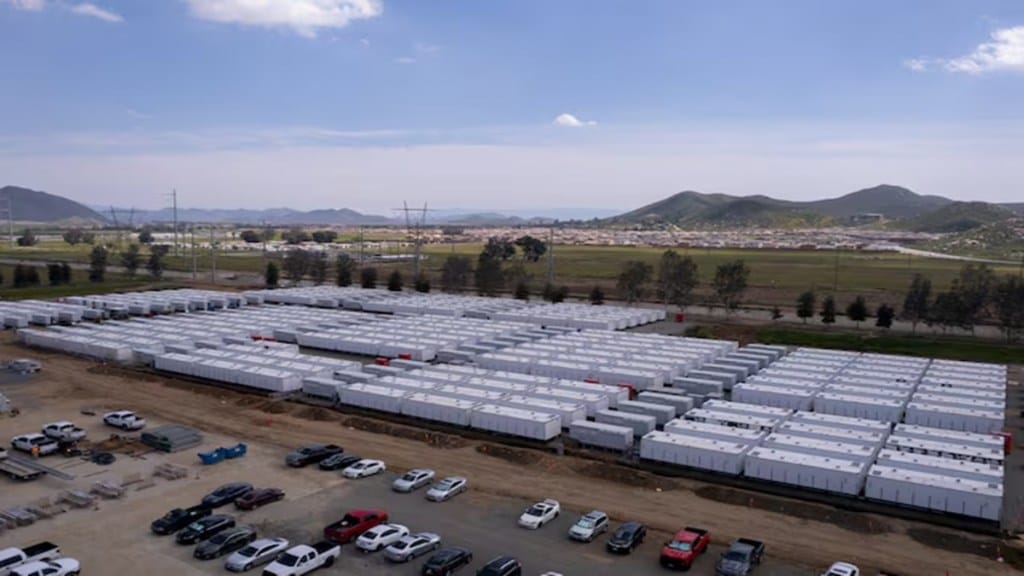By Himraj Dang & Debmalya Sen
A report by JMK Research in 2023 commented on the rise of grid-scale energy storage systems (ESS) via demand-driven tenders, and how this was becoming important for the grid integration of renewables. The report, entitled Energy Storage: Connecting India to Clean Power on Demand, mentioned that 8 gigawatt (Gw) of tenders were awarded in 2023. According to the Central Electricity Authority (CEA, 2023), India would require at least 41.7 Gw/208 Gwh (gigawatt-hour) of battery energy storage systems (BESS) and 18.9 Gw of pumped hydro storage (PHS) in FY30.
We are writing this article to highlight the stellar progress made by storage in 2024, based on a report by Debmalya Sen entitled India: Utility-Scale Energy Storage Market. Not only were 178 megawatt-hour (Mwh) of battery storage projects commissioned, reflecting ESS market growth of 1.7x in 2024, but 32 tenders amounting to 67 Gwh were also floated in the year (as against 47 GWh in the previous five years).
As of December 2024, 114 GWh of ESS capacity tenders (82 in number) have already been publicised. This pipeline is split between PHS (91 Gwh) and BESS (20 GWh). ESS now amounts to 23% of the tendered capacity.
The market size is now expected to reach 250 Gwh of BESS capacity by 2032 (India Energy Storage Alliance), compared to a modest 0.36 Gwh operational in January. A further fillip to the market is expected from the recent directive for solar tenders to incorporate a minimum two-hour co-located ESS equivalent of 10% of the capacity.
Energy storage is projected to grow 5x between 2026 and 2032 with an estimated investment of `4.79 lakh crore ($55 billion) by 2032. This is needed to facilitate the injection of growing variable renewable energy (VRE) into the Indian grid, estimated to rise from the current 200 Gw to 500 Gw capacity by 2030. Also, given the estimated growth in demand of 7% per annum in this period, a study by the India Energy and Climate Center at the University of California, Berkeley, concludes that “by 2027, 100-120 Gw of new solar, out of which 50-100 Gw is co-located with 16-30 Gw x 4-6 hours of storage, can avoid shortages”.
Tender configurations
Tenders come in an array of configurations: standalone (BESS, PHS); renewable energy (RE)+ESS/round the clock (RTC); solar+BESS; and firm and dispatchable RE or FDRE (assured peak, load following, RTC, and specific peak supply). These are differentiated by technology, capacity utilisation, tariff structure, peak requirement, mandatory storage participation, and peak availability.
Bidders and buyers
Most of the bidders in these tenders are RE independent power producers (IPPs), and conventional generators, as expected. The usual RE IPPs show up, namely Renew, Greenko, ACME, Hero Futures, Sembcorp, O2 Power, Avaada, Juniper, Serentica, BrightNight, etc. Conventional generators include NTPC, Reliance Power, Tata Power, JSW, Essar, L&T, etc.
The Solar Energy Corporation of India (SECI) is the leading buyer of storage capacity. With 26 tenders (10 Gwh BESS, 14 Gw RE), SECI remains the largest nodal agency for ESS-linked tenders, followed by NTPC with 12 tenders (26 Gwh ESS, 4 Gw RE), and GUVNL and SJVN at joint third with six tenders each. In following the award of such tenders to execution, NHPC holds a 100% track record followed by SECI and NTPC at 58%, and SJVN at 50%. This measure is worth tracking as 9.5 Gwh of awarded capacity is stranded without power sales agreements.
Tariffs
The tariff trends for various segments of storage are revealing. For standalone BESS, for example, 10.7 Gwh of tenders have been issued, 80% in 2024. Tariffs have seen a 66% decline in two years from Rs 10.6 lakh/Mw/month to Rs 3.72 lakh/Mw/month (without viability gap funding or VGF, going down further to Rs 2.21 lakh/Mw/month with VGF). With this competitiveness in the markets, there may be no need for VGF in the future.
For FDRE, 20.2 Gwh of tenders have been issued, 50% in 2024. Peak guarantee tariffs have been steady in the range of Rs 4.25-4.69/kilowatt-hour (kwh) in 2024. For solar+BESS tenders, 8.9 Gwh of tenders have been issued, 88% in 2024. Tariffs have seen a steep decline from Rs 5.6/kwh in 2021 to Rs 3.52/kwh in 2024.
Global story
BloombergNEF’s Levelized Cost of Electricity report indicates that the global benchmark cost for battery storage projects fell by a third in 2024 to $104 per Mwh. The forecast is for batteries to finally cross the vaunted $100/Mwh threshold in 2025, already surpassed in China by 2023.
China’s energy storage sector saw an annual increment of 1.3x in 2024, with total installed capacity reaching 73.76 Gw, according to Bian Guangqi, an official with the National Energy Administration.
Market concerns
As battery prices have been falling and the need for grid stability rises, given the injection of renewables, this is an industry segment that promises supernormal growth. Post-award management should improve to avoid cancellations, and the lack of signing of purchase and sale agreements. One reason for cancellations is the wish for ever-declining tariffs, ignoring the fact that price discovery only happens with a steady stream of tendered capacity.
It is also surprising that an important new study by the CEA on generation planning for 2032 forecasts the need for 84 Gw of fresh thermal capacity while ignoring the role of storage. The bundling of competitive RE and storage in various configurations should be a like-to-like replacement for firm thermal power, especially in states with high average power purchase cost, peak demand, and VRE penetration.
Given the rapid coming of age of ESS, with lower tariffs and time-bound execution, this asset class should be a key input in managing power shortages, planning fresh capacity, and decarbonisation of the grid.
The writers are respectively independent consultant and energy lead, World Economic Forum.
Disclaimer: Views expressed are personal and do not reflect the official position or policy of FinancialExpress.com. Reproducing this content without permission is prohibited.

